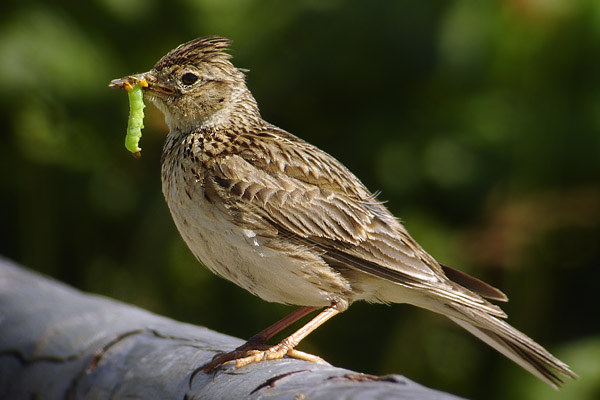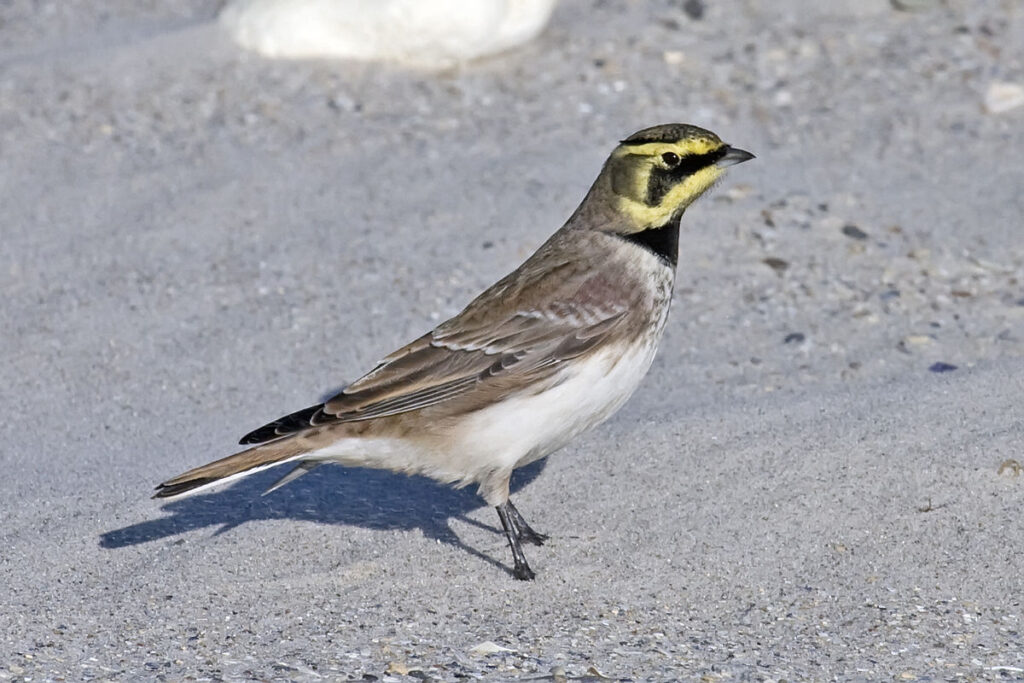Lark may mean “spree, frolic, merry adventure,” 1811, slang, of uncertain origin; or possibly a shortening of skylark, sailors’ slang for playing rough in the rigging of a ship (larks were known for their high-flying). The bird got the name in the 14th century.
The Horned Lark, Eremophila (desert loving) alpestris (of the mountains), is not restricted to North America; in fact it is found all over northern Asia and much of central and southern Asia, in 42 subspecies. Nesting occurs on open ground in depressions or a cavity dug with the feet, the nest lined with fur or feathers. Having few or no places to perch the male typically sings while flying high above the female, occasionally diving and swooping upward with open wings before he hits the ground. The Horned Lark is small (6-7.75 inches) and gets its common name from its horn-like feather tufts which are most often visible on males. The birds are distinguished by their dominant black lores, cheek patches, and breast patch which contrast with the white to yellow eyebrow stripe, ear patches, and chin. The back, rump, nape, and dorsal side of the tail feathers are a brownish gray with the breast and belly light brown to white. Juveniles are distinguished from adults by dusky facial features and lighter overall coloration.

The family of larks is Alaudidae, from the Latin aluda, lark. Worldwide, there are about 90 lark species, many of which are found in Africa and Asia. The only lark belonging to this family in North America is the Horned Lark and Horsefield’s Bush Lark is the only member in Australia. Often when “lark” is referred to, it’s the European Skylark (left. )There are small isolated populations of Skylarks on the coast of British Columbia and the northeast coast of the U.S. (The Lark Sparrow is a member of the family Passerellidae, the New World Sparrows, and the two Meadowlark species belong to the blackbird family, Icteridae.)
Males are slightly larger and darker than females with color variations throughout North America relating to habitat moisture levels. Gloger’s rule , an ecological phenomenon, says that within a species of birds (and mammals) more heavily pigmented forms tend to be found in more humid environments. One explanation appears to be the increased resistance of dark feathers to feather-degrading bacteria. Feathers in humid environments have more bacteria, and humid environments are more suitable for microbial growth; dark feathers are more difficult to break down. Another explanation is that dark feathers absorb more solar radiation, restricting dark colored birds to cooler environments.
Horned Larks are still numerous but their numbers are declining. Since 1966 there has been an estimated 65% decline in their population in North America. The U.S. Fish and Wildlife Service listed the Streaked Horned Lark ( Eremophila alpestris strigata, right ), a subspecies from Washington and Oregon, as a threatened species under the Endangered Species Act in May of 2022.
